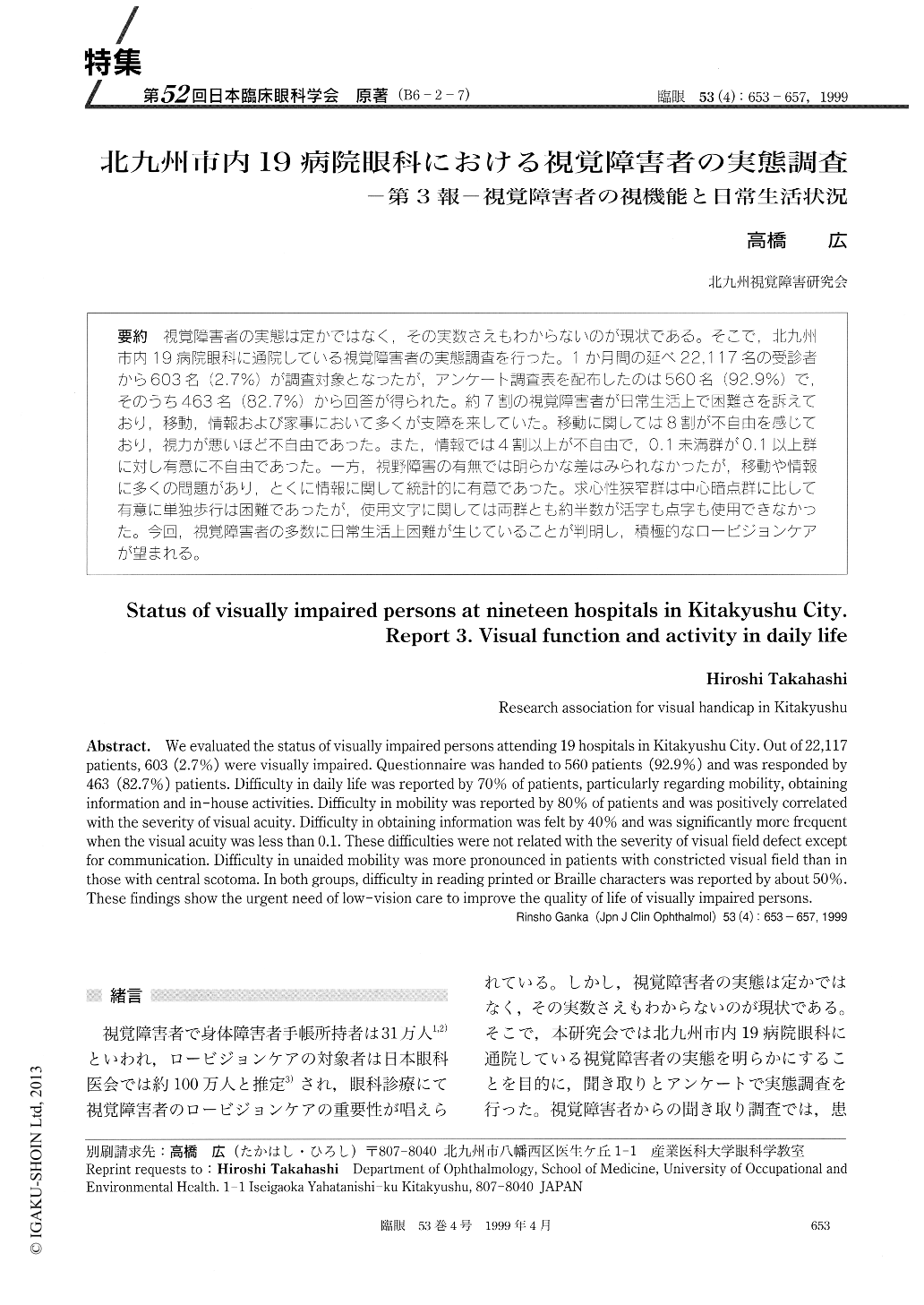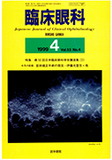Japanese
English
- 有料閲覧
- Abstract 文献概要
- 1ページ目 Look Inside
(B6-2-7) 視覚障害者の実態は定かではなく,その実数さえもわからないのが現状である。そこで,北九州市内19病院眼科に通院している視覚障害者の実態調査を行った。1か月間の延べ22,117名の受診者から603名(2.7%)が調査対象となったが,アンケート調査表を配布したのは560名(92.9%〉で,そのうち463名(82.7%)から回答が得られた。約7割の視覚障害者が日常生活上で困難さを訴えており,移動,情報および家事において多くが支障を来していた。移動に関しては8割が不自由を感じており,視力が悪いほど不自由であった。また,情報では4割以上が不自由で,0.1未満群が0.1以上群に対し有意に不自由であった。一方,視野障害の有無では明らかな差はみられなかったが,移動や情報に多くの問題があり.とくに情報に関して統計的に有意であった。求心性狭窄群は中心暗点群に比して有意に単独歩行は困難であったが,使用文字に関しては両群とも約半数が活字も点字も使用できなかった。今回,視覚障害者の多数に日常生活上困難が生じていることが判明し,積極的なロービジョンケアが望まれる。
We evaluated the status of visually impaired persons attending 19 hospitals in Kitakyushu City. Out of 22,117 patients, 603 (2.7%) were visually impaired. Questionnaire was handed to 560 patients (92.9%) and was responded by 463 (82.7%) patients. Difficulty in daily life was reported by 70% of patients, particularly regarding mobility, obtaining information and in-house activities. Difficulty in mobility was reported by 80% of patients and was positively correlated with the severity of visual acuity. Difficulty in obtaining information was felt by 40% and was significantly more frequent when the visual acuity was less than 0.1. These difficulties were not related with the severity of visual field defect except for communication. Difficulty in unaided mobility was more pronounced in patients with constricted visual field than in those with central scotoma. In both groups, difficulty in reading printed or Braille characters was reported by about 50%. These findings show the urgent need of low-vision care to improve the quality of life of visually impaired persons.

Copyright © 1999, Igaku-Shoin Ltd. All rights reserved.


